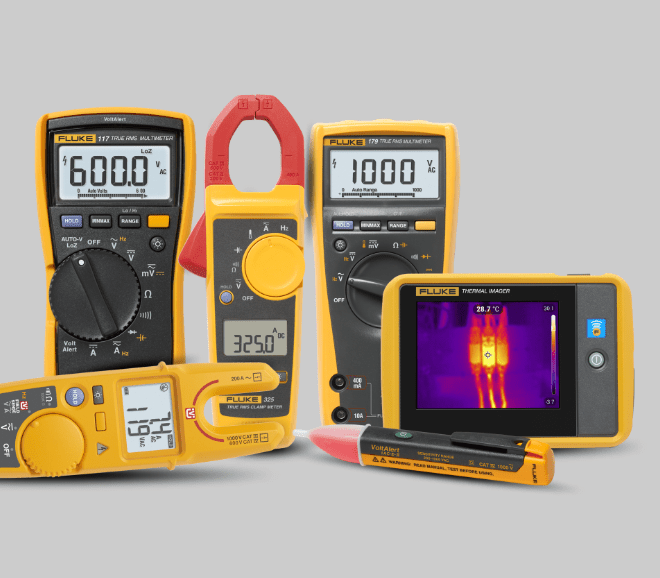What is an Ampere?
An ampere (AM-pir), or amp, is the international unit used for measuring current. It expresses the quantity of electrons (sometimes called "electrical charge") flowing past a point in a circuit over a given time.

What is a CAT Rating?
Category (CAT) ratings define the electrical environment in which a tool can safely operate, according to IEC 61010-1 standards. They reflect a tool’s ability to withstand transient voltage spikes — short, high-voltage surges that can occur due to factors like lightning strikes, utility switching, or load changes. The higher the CAT rating, the more robust the tool is in protecting against these surges.
Get more safety-related information in this guide on digital multimeter safety.
What is Capacitance?
Capacitance is the ability of a component or circuit to collect and store energy in the form of an electrical charge.
Ready to learn how to measure capacitance? Get the step-by-step instructions here.
What is Continuity?
Continuity is the presence of a complete path for current flow. A closed switch that is operational, for example, has continuity.
Ready to learn how to measure continuity? Get the step-by-step instructions here.
What is Current?
Current is the rate at which electrons flow past a point in a complete electrical circuit. At its most basic, current = flow.
What is a Digital Multimeter?
A digital multimeter (DMM) is a versatile electronic device used to measure various electrical properties, including voltage, current, and resistance.
What is Duty Cycle?
Duty cycle is the ratio of time a load or circuit is ON compared to the time the load or circuit is OFF. Duty cycle, sometimes called "duty factor," is expressed as a percentage of ON time.
What is Frequency?
Frequency is the rate at which current changes direction per second. It is measured in hertz (Hz), an international unit of measure where 1 hertz is equal to 1 cycle per second.
Learn how to measure frequency with a digital multimeter. Get the step-by-step now.
What is a Hertz?
Hertz (Hz) is a measure of frequency where one Hz is equal to one cycle per second. Each cycle includes both a negative and a positive alternation, or wave. One cycle is equal to one complete wave of alternating current (AC) or voltage.
What is Impedance?
Impedance is like a measure of the "opposition" a circuit offers to the flow of electrical current. The higher the impedance, the less current that can flow through the circuit.
What is an IP Rating?
IP (Ingress Protection) ratings classify a device’s ability to resist solids such as dust and liquids like water, based on the IEC 60529 standard. The rating is shown as “IPXX,” where the first digit (0–6) indicates protection against solid particles (like dust), and the second digit (0–9K) specifies water resistance. For example, IP67 denotes a fully dust-tight device that can withstand immersion in water up to 1 meter for 30 minutes.
What is Intrinsically Safe?
Intrinsic safety is a protection technique used in potentially explosive atmospheres, such as refineries, chemical plants, and oil and gas platforms. The principle: even in the event of a fault, the device cannot release enough electrical or thermal energy to ignite a hazardous mixture.
What is Ohm's Law?
Ohm's Law is a formula used to calculate the relationship between voltage, current, and resistance in an electrical circuit.
See how ohms are measured with a digital multimeter in this how-to article. (Ohms symbol included!)
What is Resistance?
Resistance is a measure of the opposition to the flow of current in an electrical circuit. It is influenced by the material's properties, length, cross-sectional area, and temperature.
What is Voltage?
Voltage is the pressure from an electrical circuit's power source that pushes charged electrons (current) through a conducting loop, enabling them to do work such as illuminating a light.